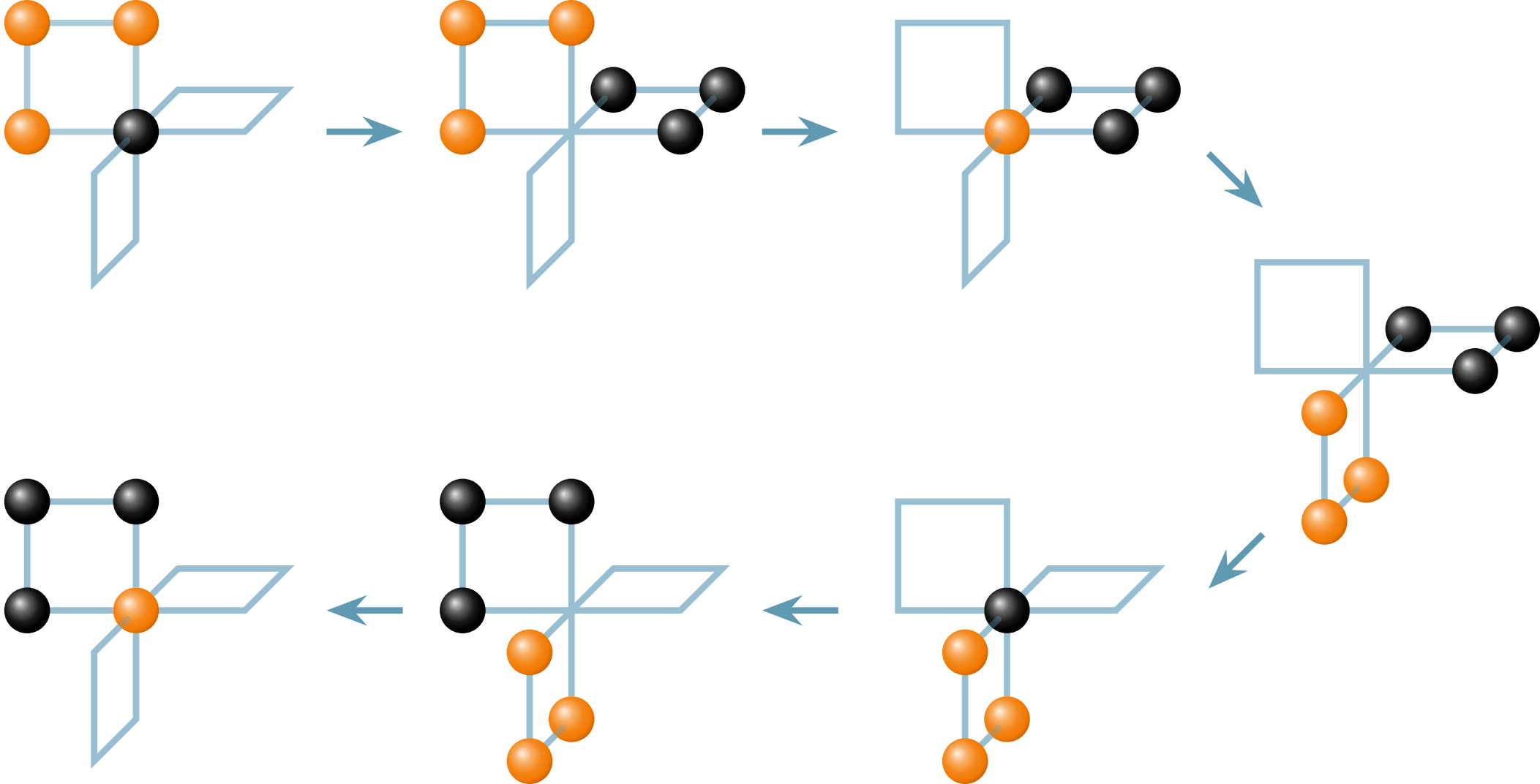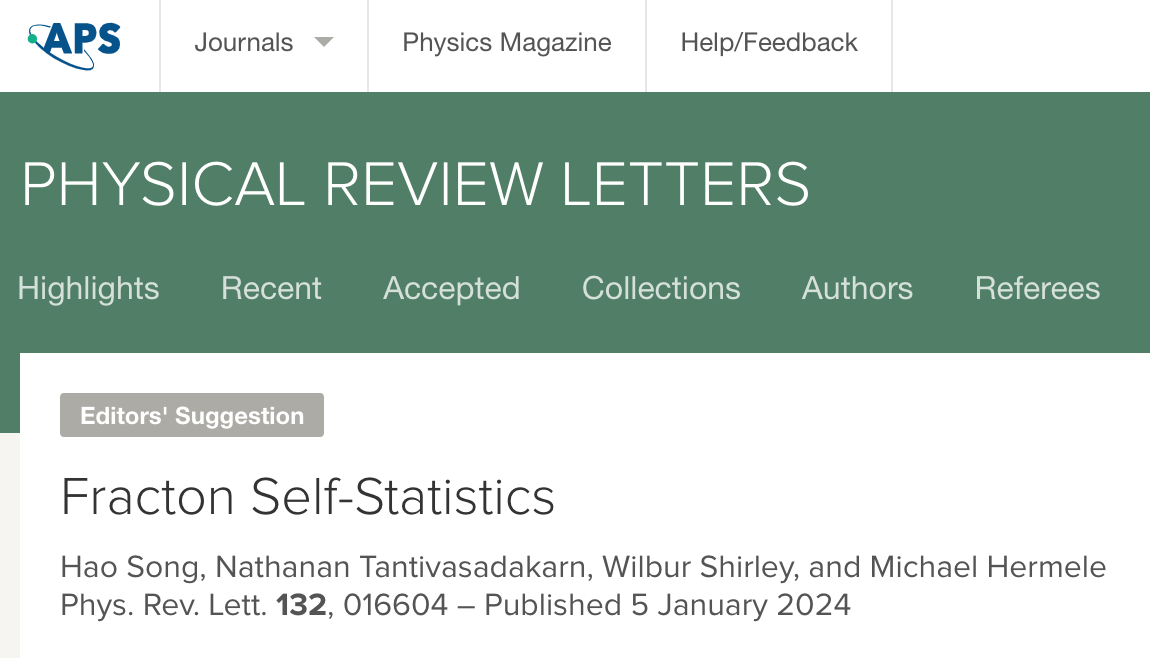Research Progress
Fracton Self-Statistics: A New Chapter in Particle Statistics
Statistics of identical particles is a fundamental aspect of quantum mechanics, underpinning fields ranging from particle physics to quantum chemistry. In recent decades, the advent of anyons in 2D systems has marked a fascinating departure from the traditional paradigm of fermion and boson statistics. Even more recently, the theoretical discovery of fractons in 3D systems suggests the possibility of an even more bizarre fold in this story. Nevertheless, the remarkable defining characteristic of fractons—their intrinsic immobility as individual particles—prompts the question of whether the concept of particle exchange, which inherently involves particle movement, even applies in this setting.

Figure 1 A windmill self-exchange process between fractons. One fracton (black) is exchanged with a fraction pattern (orange) that belongs to the same superselection sector.
The discovery of fracton self-statistics is a crucial, unavoidable step in the endeavor of classification and characterization of quantum phases of matter. We demonstrate that certain fracton phases, such as the famous Haah code and its counterpart with emergent fermionic fractons, cannot be distinguished from one another without appealing to this notion. Our findings not only impact condensed matter physics, but may also carry far-reaching implications for the theory of quantum information storage and the development of exotic quantum field theories.
This work was jointly completed by Hao Song (ITP-CAS), Nathanan Tantivasadakarn (Caltech), Wilbur Shirley (IAS), and Michael Hermele (CU Boulder). The result was recently published in Physical Review Letters (https://doi.org/10.1103/PhysRevLett.132.016604) as an editors’ suggestion.

Link:
https://doi.org/10.1103/PhysRevLett.132.016604
Contact:
Institute of Theoretical Physics, CAS
Email: songhao@itp.ac.cn
